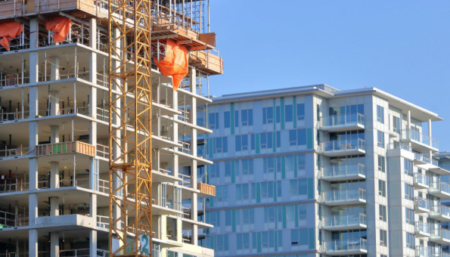
Shock to China’s asset market, lesson to India
- सितम्बर 26, 2022
- 0
चीन के परिसंपत्ति बाजार को झटका भारत को सबक
चीन का परिसंपत्ति बाजार सन 1990 के दशक के मध्य में निजी परिसंपत्ति बाजार तैयार किए जाने के बाद की सबसे बुरी गिरावट का सामना कर रहा है। वहां बिक्री महामारी के पहले के स्तर के 80 प्रतिशत पर स्थिर है और कीमतों के एकदम निचले स्तर पर पहुंच जाने के बाद भी सुधार के कोई संकेत नहीं नजर आ रहे हैं।
इसकी शुरूआत 2021 के मध्य में हुई जब सरकार ने वित्तीय तंत्र को बचाने के लिए परिसंपत्ति डेवलपरों पर लगाम लगाने की कोशिश की। दरअसल ऐसी आशंका पैदा हो गई थी कि अगर परिसंपत्ति डेवलपरों की बेतहाशा उधारी को नियंत्रित नहीं किया गया तो व्यवस्थागत जोखिम उत्पन्न हो जाएगा।
ऋण तक सीमित पहुंच के कारण डेवलपर पहले ही कमजोर थे और कोविड के बाद हुई बंदी ने उनकी बैलेंसशीट और बिगाड़ दी। इस बीच खरीदार भी दूर रहे। व्यक्तिगत खरीदार भी डेवलपरों की परियोजना पूरी करने की क्षमता में भरोसा खो चुके हैं।
चीन में कम होती आय वृद्धि और लॉकडाउन की अनिश्चितता ने भी खरीदारों का भरोसा डगमगाया है। चीन में अधिकाशं आपर्टमेंट्स को डेवलपर पहले ही बेच चुके हैं। अब प्रशासन द्वारा उनके खिलाफ कदम उठाने से उन्होंने नकदी जुटाने के लिए पहले बिक्री पर और जोर देना शुरू कर दिया है।
बिक्री कम होने से 2021 में फंडिंग गायब हो गई। पहले बिक्री करने का मॉडल तब कारगर रहता है जब मांग बढ़ रही हो और डेवलपर हर साल अधिक अपार्टमेंट बेच पा रहे हों। परंतु बिक्री घटते ही इस मॉडल में मुश्किल शुरू हो जाती हैं। बड़ी तादाद में डेवलपर संकट में आ जाते हैं और खरीदार भी चिंतित हो जाते हैं कि उन्हें परिसंपत्ति मिलेगी या नहीं। जोखिम से बचाव की प्रवृत्ति आते ही वास्तविक खरीदार भी निर्माणाधीन परियोजनाओं में रूचि लेना बंद कर देते हैं। यानी अगर डेवलपर पहले संपत्ति नहीं बेच सका तो वह परियोजना पूरी नहीं कर पाएगा। ऐसे में जोखिम का एक दुश्चक्र शुरू हो जाता है।
डेवलपर की वित्तीय मुश्किलों ने उन्हें विवश किया है कि वे निर्माण गतिविधियों को निलंबित करें और नई परियोजनाओं को रोक दें। चल रहा विनिर्माण भी 40 फीसदी कम हुआ है और नई परियोजनाओं की शुरूआत 30 फीसदी घटकर 2010 के स्तर पर आ गई है। जमीन की बिक्री में 50 फीसदी की गिरावट है। जाहिर है यह क्षेत्र संकट में है।
चीन के परिसंपत्ति बाजार की कमजोरी वैश्विक जिंसों पर यकीनन असर डालेगी। अब तक यह असर सीमित था क्योंकि अधोसंचार व्यय परिसंपत्ति व्यय में कमी की भरपाई कर रहा था। बहरहाल, अगर विनिर्माण में गिरावट आती रही तो जिंस कीमतें भी प्रभावित होंगी।
चीन के परिसंपत्ति बाजार में घटी घटनाओं में भारत के लिए भी सबक हैं। इससे पता चलता है कि अचल संपत्ति और विनिर्माण उद्योग किस हद तक वृद्धि के वाहक हो सकते हैं। इसका असर वृद्धि पर भी होगा जैसे कि हम आईएलऐंडएफएस मामले में देख चुके हैं। भारत का अचल संपत्ति क्षेत्र अचानक नकदी संकट से जूझने लगा था और फंडिंग की बाधाओं के चलते गैर बैंकिंग वित्तीय क्षेत्र की कंपनियों की बैलेंस शीट प्रभावित हुई थी। हमें लगातार डिफॉल्ट देखने को मिले थे और अचल संपत्ति से संबंधित फंसे हुए कर्ज में इजाफा हुआ था।
भारत में विनिर्माण और अचल संपत्ति का क्षेत्र फलफूल रहा है, ऋण बढ़ रहा है और परिसंपत्तियों से जुड़े सुधारों को अंजाम दिया जा चुका है। ऐसे में विनिर्माण वृद्धि का वाहक बनेगा।
Shock to China’s asset market, lesson to India
China’s Real asset market is facing its worst decline since the creation of the private asset market in the mid-1990s. Sales are stable at 80 per cent of pre-pandemic levels and are showing no signs of recovery even after prices have hit a very low level.
It started in mid-2021 when the government tried to rein in Real asset developers to protect the financial system. In fact, there was an apprehension that systemic risk would arise if the excessive borrowings of asset developers were not controlled.
Developers were already vulnerable due to limited access to credit and the post-Covid shutdown further dented their balance sheets. Meanwhile, buyers also stayed away. Individual buyers have also lost confidence in the ability of developers to complete projects.
Declining income growth in China and the uncertainty of the lockdown have also shaken the confidence of buyers. Developers have already sold most of the apartments in China. Now with the administration taking action against them, they have started putting more emphasis on sale before construction to raise cash.
Funding disappeared in 2021 due to low sales. The under sell construction model works when demand is increasing and developers are able to sell more apartments every year. But as soon as sales drop, it starts getting tough in this model. A large number of developers are in trouble and buyers are also worried whether they will get the asset or not. Even genuine buyers stop taking interest in under-construction projects as soon as risk aversion comes in. That is, if the developer could not sell the property earlier, he would not be able to complete the project. Thus a vicious cycle of risk begins.
Developers’ financial woes have forced them to suspend construction activities and put new projects on hold. On-going construction has also declined by 40 per cent and new project launches have dropped by 30 per cent to 2010 levels. There is a 50 percent drop in the sale of land. Obviously this area is in trouble.
The weakness of China’s asset market will certainly have an impact on global commodities. So far this impact was limited as the infrastructure expenditure was offsetting the shortfall in asset expenditure. However, if construction continues to decline, commodity prices will also be affected.
There are lessons for India in the developments in the Chinese Real asset market. This shows the extent to which the real estate and manufacturing industries can be growth drivers. This will also have an impact on growth as we have seen in the case of IL&FS. India’s real estate sector was suddenly reeling from a liquidity crunch and funding constraints affected the balance sheets of NBFCs. We had seen frequent defaults and a rise in bad loans related to real estate.
The manufacturing and real estate sectors in India are booming, credit is increasing and asset reforms have been carried out. In such a situation, construction activities will become the driver of growth.
































































